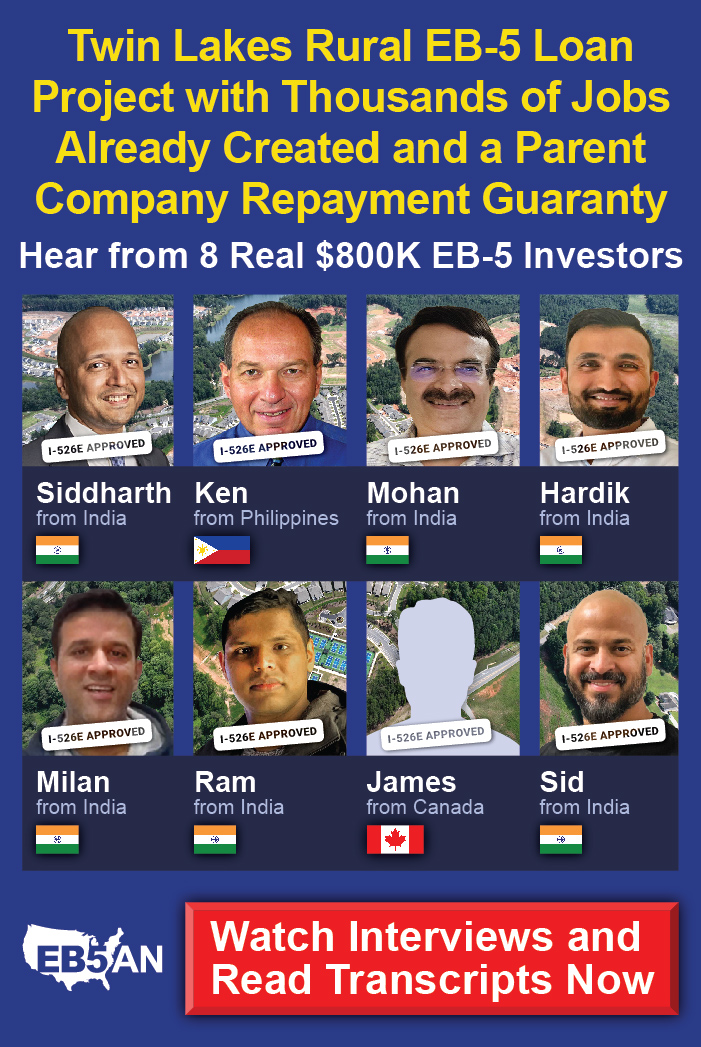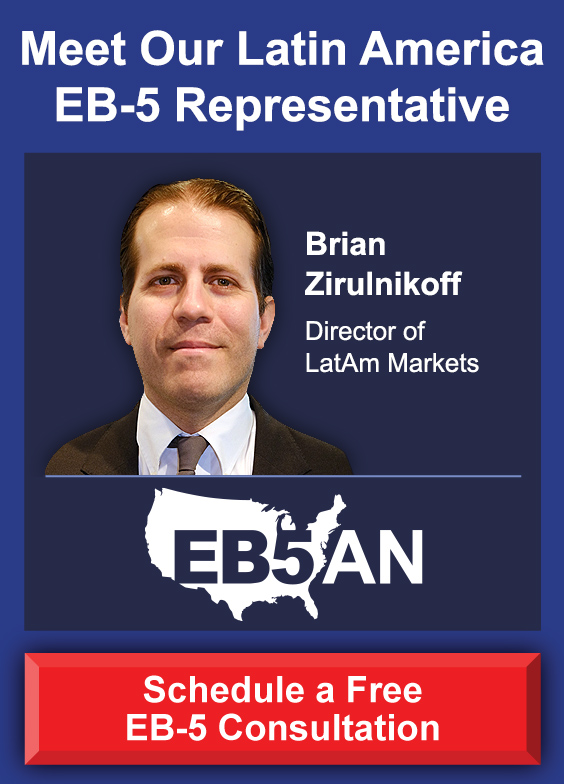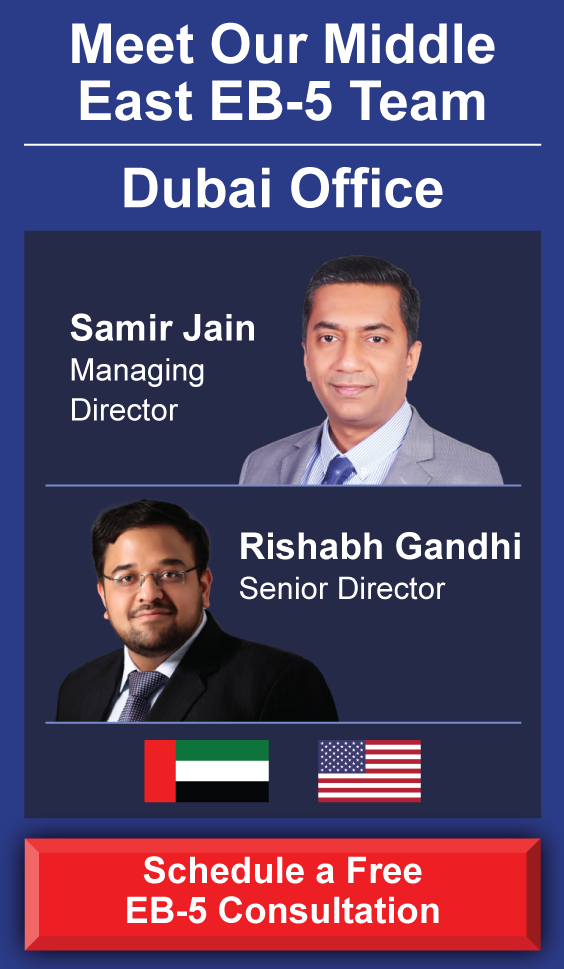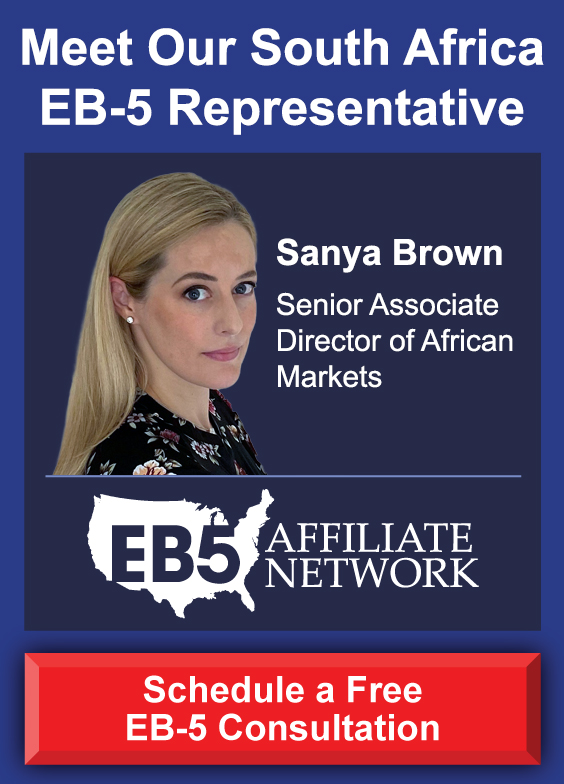Investments made through the EB-5 Immigrant Investor Program can sometimes be appealing financial endeavors.
However, for most EB-5 investors, the highest priority of all is obtaining U.S. Green Cards, or permanent residency, for themselves and their eligible family members.
Because of this, most EB-5 investors prefer to understand their chances of EB-5 approval before making an EB-5 investment in the first place.
To be sure, denial is always a possibility. There are simply no guarantees. However, the average approval rate for I-526 and I-829 petitions indicates that, for most investors, the EB 5 visa process is certainly worth it.
What Is An EB-5 Investment?
The EB-5 Investment Process
Do You Need An EB-5 Immigration Attorney?
What Is the Value of Working with an EB-5 Regional Center?
A Closer Look At Form I-526 and I-829
The Hard Numbers on I-526 and I-829 Approvals
What Is An EB-5 Investment?
An EB-5 investment allows foreigners to obtain permanent residency in the U.S. by investing a certain amount of money in a business to help create jobs.
The EB-5 Immigrant Investor Program is one of the fastest ways for foreign nationals, their spouses, and unmarried children under 21 years of age to receive a U.S. Green Card.
The program is administered by the United States Citizenship and Immigration Services (USCIS) and is designed to generate investment in underserved areas of the United States.
How does it work?
EB-5 investors must make a minimum capital investment of $1,050,000 in a new commercial enterprise (NCE).
This capital can either be invested directly in the NCE, or it can be invested indirectly through an EB-5 regional center.
Their investment must create at least 10 full-time jobs that provide for a minimum of 35 hours per week for U.S. workers. These jobs must also last at least two years.
Nearly all EB-5 investors invest through the regional center program, allowing for much more flexibility in meeting the program’s job creation requirement.
The minimum EB-5 investment capital amount is lowered to $800,000 if the chosen EB-5 project is located in a targeted employment area (TEA)—an area designated by USCIS as either a rural area or a region with a high unemployment rate.
EB5AN keeps an up-to-date TEA map to help EB-5 investors find if their chosen project for EB-5 investment is eligible for a lowered minimum investment.
Any EB-5 investments must be lawfully sourced and remain “at risk” for the entire duration of the investment, meaning that it is an actual investment instead of a guaranteed return.
The investor must also actively participate in the daily management of the NCE, such as a board member or a limited liability company partner.
The EB-5 Investment Process
Although the EB-5 investment process may seem challenging, it’s actually quite straightforward once you know what to do.
In this section, we’ll take a closer look at each step in the process.
Step 1: Investment and Documentation
The first thing you need to do when starting the EB-5 investment process is to find an eligible project. These projects will typically require $800,000.
Once you’ve identified a project, you can notify them of your intention to invest the required amount.
Step 2: File Form I-526 or I-526E
The next step is filing your documentation. The typical forms you’ll need to complete are Form I-526 (Immigrant Petition by a Standalone Investor) or Form I-526 E (Immigrant Petition by a Regional Center).
You’ll also need to pay the relevant filing fee for each form.
Form I-526 is submitted to USCIS by direct investors, and Form I-526E is submitted by regional center investors.
Both of these forms require extensive supporting documentation that:
- Proves the validity of the NCE.
- Proves the validity of the regional center.
- Verifies the investor and their investment.
- Validates the source of funds.
Preparing either one of these petitions requires great detail and preparation. You can also use an immigration attorney who will submit Form I-526 or I-526E to USCIS on your behalf.
Step 3: Obtain Conditional Permanent Residency
Once the USCIS has approved your petitions, you’ll be granted conditional permanent residency in the U.S. This means you can stay in the country for up to two years on a conditional Green Card.
If you’re an investor that resides outside of the U.S., you’ll need to complete an in-person interview at your local Consulate or Embassy before you have conditional residency.
Investors already residing in the U.S. can file Form I-485 for adjustment of status at the same time as they file their I-526 or I-526E petition.
Step 4: File Form I-829 for Removal of Conditions
In the final 90 days of an EB-5 investor’s two-year conditional permanent residence, they must file Form I-829 to remove conditions from their Green Card before it expires. This is usually filed by an immigration attorney.
Upon approval by USCIS, the investor and their eligible family members will each receive Green Cards. These cards grant full permanent residency in the United States without conditions.
If the NCE has turned a profit by the time the loan term expires, the investor’s EB-5 capital investment will also be repaid.
Do You Need An EB-5 Immigration Attorney?
An immigration attorney is essential to the EB-5 process. The process is usually very complex and highly regulated, making it difficult to navigate.
An immigration attorney specializing in EB-5 can provide investors with valuable expertise and guidance to ensure the process is completed properly. Attorneys also help you ensure that all your documents meet the legal requirements.
Nearly all EB 5 investors hire an immigration attorney to help them file Form I-526 or I-526E and Form I-829.
Many also retain an immigration attorney’s services to advise throughout the entire EB-5 visa process. Attorneys also work to protect applicants’ privacy.
Forms I-526/I-526E and I-829 require extensive supporting documentation to prove compliance with all EB-5 Immigrant Investor Program tenets.
Every EB-5 project and every EB-5 investor is different, so gathering the specific documentation needed to support the claim of each specific case can be difficult.
Immigration attorneys will advise on the exact documentation investors need and help compile it.
They also nearly always file I-526/I-526E and I-829 petitions with USCIS on behalf of immigrant investors.
Retaining the services of an immigration attorney will help ensure that, at each stage of the EB-5 process, an investor’s specific case meets all criteria for proof of compliance with USCIS regulations.
What Is the Value of Working with an EB-5 Regional Center?
Making an EB-5 investment through an EB-5 regional center allows investors to include indirect and induced jobs toward their employment creation requirement.
Indirect jobs refer to any job created because of the deployment of EB-5 capital. For example, construction vendors, legal counsel, or others whose jobs depend indirectly on the NCE.
Counting indirect jobs helps cushion an investor against unforeseen circumstances that might make some jobs last less than two years.
Direct EB-5 investments can only count direct employment creation, meaning employees hired on a W-2 tax form, a severe limitation compared to a regional center investment.
A streamlined process is another driving force behind the overwhelming preference to make an EB5 investment through an EB-5 regional center.
Reputable regional centers can also offer their EB-5 investors professional guidance, which has been proven to increase investors’ chances for I-526 success.
Another advantage of regional center investment is relaxed investor involvement requirements, compared to a joint venture.
Merely signing on as a limited partner is sufficient to meet EB-5 program requirements when affiliated with a regional center LLC.
A Closer Look At Form I-526 and I-829
Now that you know more about the EB-5 investment process, we’ll take a closer look at the important documentation you need for your application.
Form I-529 petitions
The first form every prospective EB-5 investment participant must file with the USCIS is Form I-526 or I-526E. This submission officially sets off the EB-5 investment journey.
Filing this petition means an investor has already identified their EB-5 project and committed their capital to a designated account.
This means that by the time a prospective investor has made this submission, a lot of groundwork has already been laid.
This fact—along with the many conditions, regulations, and documentary requirements you have to follow—can make the I-526 an intimidating petition.
In addition to the documentation, investors must also attend an interview at their local U.S. embassy.
During this interview, the USCIS asks in-depth questions about an investor, their immediate family members, and the proposed project they are investing in.
Investors must also feet the following requirements if they want to move forward in the application process:
- They must demonstrate they have committed their EB-5 funds to the NCE and will participate in the project’s management.
- They must prove that the NCE receiving their EB-5 investment truly exists and has a viable job creation plan.
- They must provide evidence that all EB-5 capital has been sourced lawfully.
You will also have to provide the following supporting documentation to fulfill the requirements of the petition process:
- Photocopies of passports.
- Copies of your tax returns from the last seven years.
- Foreign business registration papers.
- Evidence of all civil and criminal judgments and cases.
- Evidence of an investor’s net worth.
- Employment history.
- Any fees or costs transferred between the investor and their regional center or NCE.
- Proof of compliance with U.S. work and immigration laws.
- The NCE’s business plan.
- Copies of the NCE’s founding documents.
- Bank statements showing the investor’s deposits in the NCE’s U.S. bank accounts or other evidence of the petitioner personally investing.
- A copy of the receipt notice from the regional center’s I-956F petition filing.
Usually, meeting the source-of-funds requirement has been the most time-consuming part of the process due to the various fund sources an investor must prove.
Savvy investors tend to hire an experienced EB-5 immigration attorney to streamline this process.
These industry experts can advise EB-5 clients on the best fund sources to use and offer insight into any other challenging areas of the I-526 submission and approval process.
Getting I-526 or I-526E approval provides eligibility for two years of conditional U.S. permanent residency status for the investor and their qualified relatives.
Once you’ve completed the I-526 petition and received approval, you’ll move on to form I-829.
Form I-829 petitions
After you’ve completed the challenging Form I-526/I-526E petition, you can move on to the more exciting part of your Green Card journey: filing Form I-829.
This form represents the final step of the EB-5 application process and is the last thing you must do before receiving permanent residency in the U.S.
The I-829 petition determines if an EB-5 investment has met all program requirements that would allow the investor and their eligible family members to obtain their U.S. Green Cards.
By filing this form, the applicant requests the removal of those requirements to obtain the right to live in the U.S. without condition.
This form must be filed in the final three months of the two-year conditional permanent residency period, investors must submit Form I-829.
The Hard Numbers on I-526 and I-829 Approvals
As we’ve mentioned before, the I-526 and I-829 petition processes can be time-consuming and difficult to navigate.
Prospective investors often debate whether the I-526 and I-829 approval rates justify the effort necessary to complete an EB5 investment successfully.
Luckily, the verdict for most is an overwhelming yes. Despite slow USCIS processing times, delays, and risk, many investors agree that the benefits are worth it.
For over a decade, the USCIS has maintained an average I-526 approval rate of nearly 83%.
More than 90% of regional center investors’ I-526 petitions are also approved, highlighting the advantage of a partnership with the right EB-5 facility.
Any foreign national who has successfully completed the first stage of USCIS adjudication—in other words, has had their I-526 petition approved—is also highly unlikely to lose their permanent resident status when filing their I-829 petition.
Data shows that since the 2016 fiscal year, the I829 approval rate has been 96%. In the last eight years, the lowest I-829 approval rate is 90%.
These statistics show that, while guaranteeing approval is still impossible, the chances of getting denied are highly unlikely.
Invest In Your Future with EB5AN
Form I-526 and Form I-829 approval rates have historically been very high, and working with an immigration attorney and EB-5 regional center can increase those odds.
Working toward fulfilling program requirements and consulting experienced EB-5 immigration attorneys throughout will only increase your chances of enjoying the countless benefits of permanent residency status in the U.S.
Schedule a free consultation with EB5AN to begin your EB-5 investment journey today.













